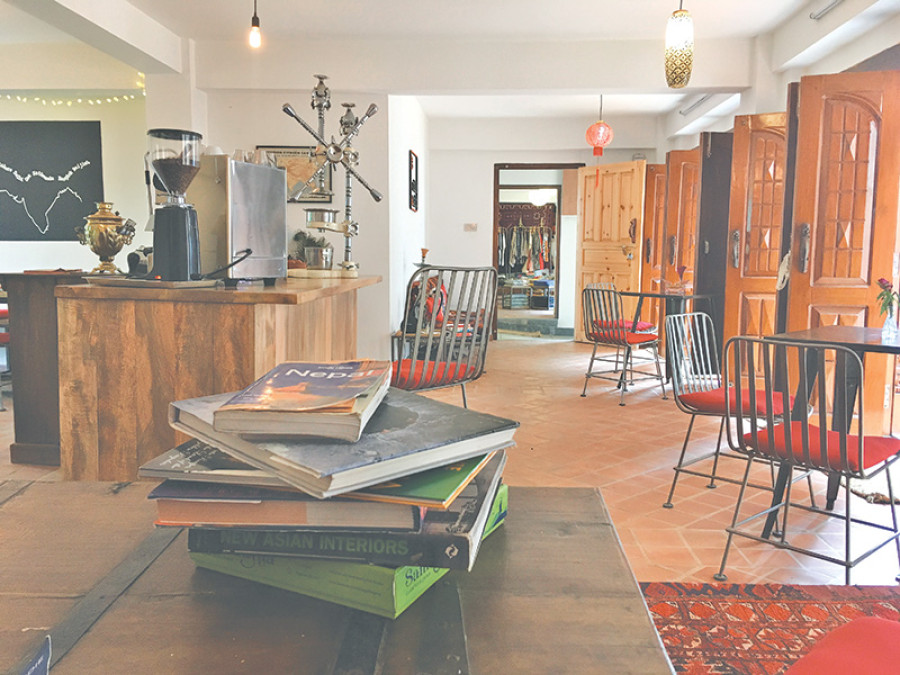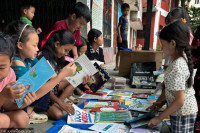Entertainment
Tastes from the Silk Road
The Peshawar Burger is a taste explosion. There is garlic and onion of course, but also cardamom, a hint of cinnamon and a whole lot of other spices more difficult to decipher.
The Peshawar Burger is a taste explosion. There is garlic and onion of course, but also cardamom, a hint of cinnamon and a whole lot of other spices more difficult to decipher.
Jerome Imstepf laughs at the guests’ puzzled face and reveals, “We learned how to cook this burger in Pakistan.”
His wife Anne Chassaing pipes in from behind the kitchen counter, where she is busy preparing plates, cutting vegetables and keeping the space clean and organised, “There are fourteen different spices in it. Isn’t that amazing?”
The Peshawar Burger is just one of the many exquisite dishes on the menu at Jerome and Anne’s restaurant, Of Silk and Salt, in the heart of Patan. The menu reads like a road map of the Silk Road, starting with Turkish Eggs for breakfast, continuing with Afghan Mantoo mutton ravioli and a Burmese tea leaf salad for dinner, and finishing off with a Saffron Gin and Tonic or a Himalayan Tulsi Rum for a night cap.
The French-Swiss couple collected these recipes during their many years of travel working for the International Committee of the Red Cross and otherwise, from remote locations along the former Silk Road, from Istanbul in Turkey, Baghdad in Iraq and Peshawar, Pakistan all the way to Bangkok, Thailand.
After some two decades on the road, Anne and Jerome have now decided to settle in Patan, in a
renovated house just around the corner from Swotha Square, where they live and rent out two rooms to tourists. The restaurant and an adjacent shop occupies the ground floor of Hotel Timila.
“I worked in Kathmandu in 2006 and loved Patan back then,” says Anne. The couple attempts to engage with the community as much as possible, employing a lively young staff.
“Seeing these motivated young people gives me high hopes for Nepal’s future,” says Anne says. “Our chef Pratibha Rai, for example, worked in Abu Dhabi for five years, but came back to work here because she is optimistic about room for development.”
Anne and Jerome spend most of their days in the restaurant, helping their staff out when a large party arrives, chatting with the guests and making sure everything works.
“My wish is that they can increasingly take over more responsibility and have more autonomy,” Anne says. “So we can finally have a weekend off again, or go hiking in the mountains for a few days,” Jerome adds.
So far, things look bright. Whenever you enter Of Silk and Salt, you find the staff in good spirits, being
attentive and polite with their guests.
The restaurant is just one half of Of Silk and Salt, the other is an adjacent shop of where Anne presents her collection of clothing and accessories. Here, it becomes clear that the Silk Road essentially turned into the Hippie Trail in the seventies. Young travellers, mostly Europeans, arrived via Istanbul and Kabul to Kathmandu, where they hung out on what is today known as Freak Street. The hippie spirit is everpresent in Anne’s shop: there are flowery blouses and long dresses, cute little pouches and delicately ornamented cushions, along with black and white t-shirts with prints referring to the Hippie Trail in stylish and humorous ways. Everything is produced locally, though Anne sometimes uses fabrics from China, Bhutan and India.
“Nepal is often pictured as this secluded country in the mountains,” Jerome says. “But this is not quite correct. Nepal has always been connected to the rest of the world. Newari architects and craftsmen travelled along the Silk Road with their skills. Himalayan salt has been exported to China and Europe for hundreds of years. We want to tell these stories through our decoration, our shop products and of course, our primary passion: our food.”




 11.12°C Kathmandu
11.12°C Kathmandu









